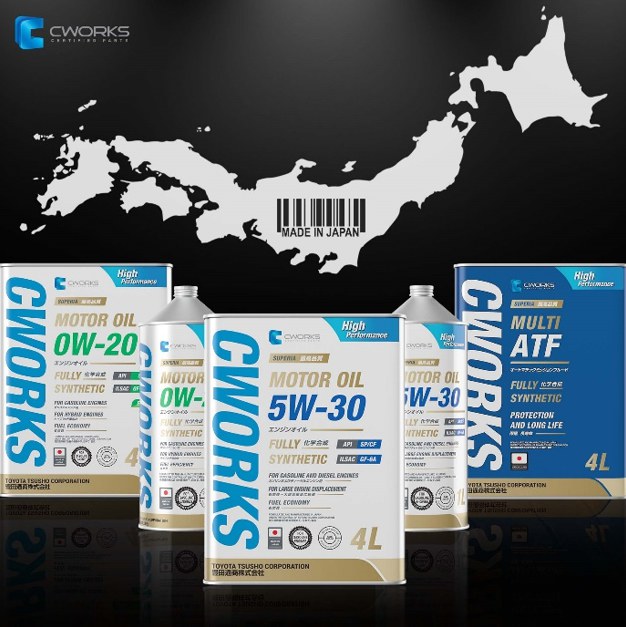JAPANESE QUALITY IN RUSSIAN REALITY
New brands always spark interest. Especially when these brands offer prospects of high quality and adaptation to the tough environmental conditions in Russia. In March 2020, Optimum Trading Co., Ltd., a representative of the CWORKS by Toyota Tsusho Corporation brand in Russia, CIS countries and Eastern Europe, launched CWORKS OIL engine lubricants in Russia.
Where are the lines of lubricants produced, what are their advantages and features? Let's take a close look.
The brand parent company - Toyota Tsusho Corporation pays great attention to the quality of suppliers selected and is constantly engaged in various research studies and projects in Japan and around the world. The desire of Toyota Tsusho Corporation to be represented in every part of the world, while offering traditional Japanese quality, has led to creating the most effective and wanted products for every country of presence. Thus, two lines of CWORKS branded motor oils, lubricants and special fluids were created: CWORKS OIL and CWORKS SUPERIA OIL.
The way a product is made directly affects what it can offer its consumer. Therefore, it would be of high interest to take a look at the conditions for the production of the European CWORKS OIL line. It is worth saying that here everything is at its best as well: modern European plant, advanced equipment, in-house research center and laboratory for the development and testing of oil products.
Thanks to these production conditions, CWORKS OIL engine oils are reliable for engine protection of all types of vehicles: passenger cars, SUVs, minibuses making their work more cost-effective.
CWORKS SUPERIA OIL premium line products are produced at a high-tech plant of JXTG Nippon Oil & Energy Corporation, founded in 1888. The manufactured product has the API SP and ILSAC GF-6A classes, first in Russia. The product line is certified and is meeting the highest quality standards.
The ILSAC GF-6A category corresponds to the API SP Resource Conserving class, which includes multigrade oils of SAE viscosities: 0W-20, 0W-30, 5W-20, 5W-30 and 10W-30. API states Resource Conserving as a separate class of resource-saving oils.
The new API SP and ILSAC GF-6A engine oils are designed for passenger cars with gasoline engines. As of today, oils of these categories are recognized as the most innovative and technologically advanced lubricants. They meet the needs of modern automakers to a greater extent. The features of oils in this category have advantages over their predecessor categories API SN and API SN PLUS in many ways. API SP specification products are subject to more stringent requirements. This is due to the fact that this specification is focused on increasing the service life of engine parts and preserving their resources. Much attention is also paid to reducing fuel consumption.
The main advantages of the API SP class over API SN and API SN PLUS include:
- Reduced risk of pre-ignition of the air-fuel mixture (Low Speed Pre Ignition or LSPI);
- Reduced risk of high-temperature piston deposits;
- Higher requirements to the amount of sludge and varnish formed by the oil;
- Increase of service life of the timing chain;
- Improved fuel economy;
- Reduced risk of high-temperature deposits in the turbocharger;
- Increase of the level of compatibility with aftertreatment systems.
API SP and ILSAC GF-6A category lubricants are not only significantly superior to their predecessors, but can completely replace them.
Winter in Russia is a real challenge, both for car users and their vehicles. And this is exactly what is emphasized in the production of CWORKS products. The motor oil components are selected with due consideration of the Russian climate diversity and meeting the necessary tolerances. Low viscosity at low temperatures is another advantage for the Russian harsh winters.
It is important for CWORKS to produce the most innovative products, therefore the exclusive importer Optimum Trading Co., Ltd. represents API SP and ILSAC GF-6A class lubricants in Russia, CIS countries and Eastern Europe.




